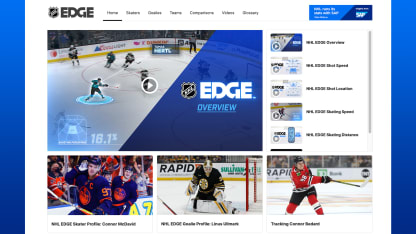Connor McDavid is fast. That, we can see. But how fast is he, exactly? What’s his top speed? How often does he put the pedal down? How does the Edmonton Oilers center compare to other players?
Now we can find out that info -- and much, much more -- thanks to NHL EDGE.
The NHL launched the website NHL.com/EDGE on Monday as the next phase of the development of its Puck and Player Tracking technology, giving the public access to some of the same data available to teams and broadcasters.
The rabbit hole runs deep for skaters, goalies and teams, with new ways to look at things like skating speed, skating distance, shot speed, shot location and zone time.
“We’ve been working on this for years,” said Russell Levine, NHL group vice president, statistics and information. “You’ve seen it in broadcasts with the shot speeds and player identification. What we want to do is bring some of that to fans.”


















